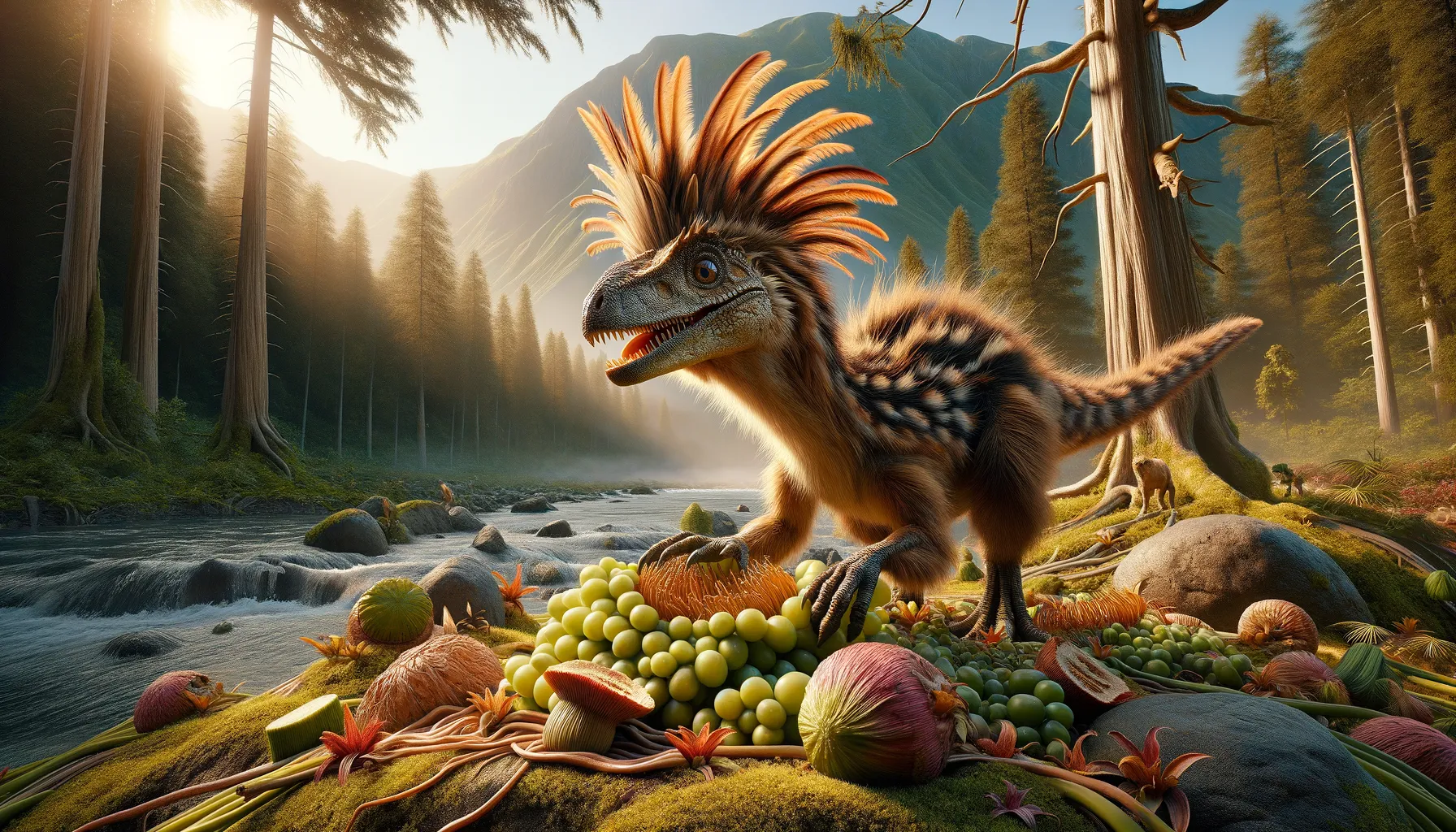
Incisivosaurus
Tiny predator with rodent-like teeth!
Period
Cretaceous
Length
Measured roughly 1 meter in length.
Height
Approximately 0.7 meters tall.
Weight
Weighed around 2-3 kilograms.
Incisivosaurus was a small, feathered dinosaur known for its prominent front teeth, which resembled those of modern rodents. This intriguing creature lived during the early Cretaceous period in what is now northeastern China. Its unusual dental characteristics suggest it had a unique approach to feeding, possibly focusing on plants. Incisivosaurus provides significant insight into the evolution of paravian theropods and their ecological niches.
Diet
Incisivosaurus likely had an omnivorous diet, with a preference for plants. Its prominent incisor-like teeth suggest it was well-adapted to cut through tough plant material, such as leaves and stems. Some researchers speculate it might have also fed on insects or small vertebrates.
Hunting
Due to its small size and dentition, Incisivosaurus may not have been an active hunter of large prey. Instead, it probably foraged for food, using its teeth and dexterity to access and process plant material. Its hunting behavior, if it occurred at all, likely focused on easy-to-catch prey.
Environmental challenges
Incisivosaurus lived in a dynamic environment that would have posed various challenges, including seasonal changes in food availability. Competition for resources with other herbivorous and omnivorous species was likely a constant issue. To survive, it had to cope with predators and potentially harsh climatic variations in its region.
Speed
Relatively slow-moving.
Lifespan
Estimated to be several years.
First discovery
First discovered in northeastern China in 2002.
Fun Facts
- Incisivosaurus was a small dinosaur that lived about 128 million years ago during the early Cretaceous period.
- This dinosaur is known for its unusual teeth, which were large and chisel-like, similar to those of a modern rodent.
- Incisivosaurus is thought to have been an herbivore, likely using its teeth to gnaw on tough plant material.
- The fossil of Incisivosaurus was discovered in northeast China, providing important clues about the diversity of early feathered dinosaurs.
- Despite their appearance, Incisivosaurus was related to the group of theropod dinosaurs that eventually evolved into birds.
- Incisivosaurus had a relatively short tail and long slender limbs, suggesting it was a nimble runner.
- Its name, Incisivosaurus, means 'incisor lizard,' highlighting its distinctive teeth.
Growth and Development
Incisivosaurus, like many dinosaurs, likely experienced rapid growth during its juvenile stages to reach maturity. The development of its teeth would have been critical, as they were its primary feeding tool. Researchers believe that studying its growth patterns could offer insights into its evolutionary adaptations.
Habitat
This dinosaur inhabited the lush, dense forests of early Cretaceous northeastern China. Its environment offered ample vegetation for food and shelter, providing a rich ecosystem for it to thrive. The habitat not only supported Incisivosaurus but also a diverse array of other prehistoric flora and fauna.
Interaction with other species
Incisivosaurus likely coexisted with a variety of other dinosaurs and prehistoric creatures, leading to complex ecological interactions. It might have competed with similarly sized herbivores and omnivores for food resources. Its presence would have contributed to the overall dynamics of its ecosystem.
Natural lifespan
Incisivosaurus had a natural lifespan typical for small theropods, likely reaching several years.
Reproduction
This dinosaur likely reproduced by laying eggs, similar to other theropods. Incisivosaurus may have been involved in nesting behaviors, possibly caring for its young post-hatching. Its reproductive strategy would have been crucial for the continuation of its species in its specific ecological niche.
Social behaviour
Incisivosaurus may have exhibited some social behavior, though evidence is limited. It might have foraged in small groups to increase efficiency and protect against predators. Alternatively, it could have been a solitary animal, only coming together during mating seasons.
Fossil locations
Fossils of Incisivosaurus have primarily been found in northeastern China, particularly within the Yixian Formation. This region is renowned for its well-preserved early Cretaceous fossils, providing a rich context for understanding this species. The area's fossil discoveries have greatly contributed to the broader understanding of theropod diversity.
